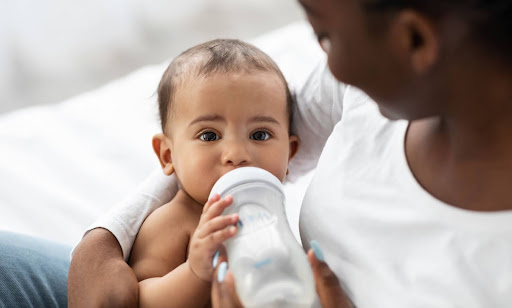
Breast milk, also known as human milk, is often called “liquid gold” for a reason—it’s packed with vital nutrients, antibodies, and enzymes that support a baby’s development. But with busy schedules and pumped milk stored for later use, many parents face a common question: “Can you reheat breast milk?”
The short answer is yes, you can—but with caution. Reheating breast milk must be done safely to preserve its nutritional integrity and protect your baby from harmful bacteria. When storing milk, handling breast milk with clean hands and sterilized equipment is essential to ensure safety and prevent contamination. In this guide, we’ll cover everything you need to know, including:
- How many times you can reheat breast milk
- Safe temperatures for warming milk
- When milk should be discarded
- How to avoid nutrient loss
- Why freeze-dried breast milk may be the best solution for storage and safety
Proper storage and reheating are crucial steps to ensure your baby’s safety. Let’s dive into the 7 most important things you need to know.
Introduction: The Basics of Breast Milk Storage
Storing breast milk properly is one of the most important steps you can take to ensure your baby receives all the intended benefits. Whether you’re building up a stash for returning to work or simply want to have some expressed breast milk on hand, following safe milk storage practices is key.
Start by using breast milk storage bags or food-grade containers specifically designed for storing breast milk. These containers are made from safe materials and feature tight-fitting lids to help prevent leaks and contamination. Always label each milk storage bag or container with the date and time the milk was expressed, as well as the amount of milk inside. This makes it easy to use the oldest milk first and keep track of your inventory.
When storing breast milk, be sure to place it in the coldest part of your refrigerator or freezer, not in the door where temperatures can fluctuate. Keeping your expressed breast milk safely stored helps preserve its valuable nutrients and immune-boosting properties, so your baby gets the best with every feeding.
1. Yes, You Can Reheat Breast Milk—But Only Once
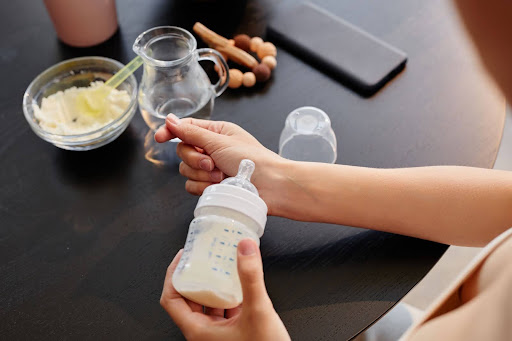
How many times can you reheat breast milk? Experts agree: breast milk should only be reheated once.
Here’s why:
- Once warmed, breast milk enters the temperature danger zone (between 40°F and 140°F), which allows bacteria to multiply quickly.
- Reheating again increases the risk of bacterial contamination, even if the milk has been kept in the refrigerator.
- Reheating breast milk multiple times increases the risk of bacterial growth and further nutrient loss, making it unsafe for your baby.
- Repeated heating can cause nutrient degradation, especially to immune-boosting proteins and enzymes.
When handling reheated breast milk, always follow storage and safety guidelines to reduce the risk of contamination and preserve its nutritional value.
To avoid waste and safety risks, warm only the amount of milk needed for one feeding.
Best Practice:
If your baby doesn’t finish a bottle, it’s safest to discard the leftover milk after 2 hours at room temperature or consider storing smaller portions to avoid waste.
2. Use the Right Temperature for Warming

When reheating breast milk, always aim for lukewarm—not hot. Breast milk should ideally be warmed to body temperature (around 98.6°F), which mimics the temperature it would be during direct breastfeeding. Heating breast milk should be done carefully to preserve nutrients and avoid overheating.
Avoid:
- Microwaving, which can create dangerous hot spots that may burn your baby and destroy nutrients.
- Boiling water, which can overheat milk and damage its protective properties.
How to Safely Reheat Breast Milk:
- Place the sealed milk container (bottle or storage bag) in a slightly warm water bath for a few minutes, or hold the container under lukewarm running water to gently increase the milk temperature.
- Use a bottle warmer designed for even heating.
- Always swirl (never shake) to mix the milk evenly.
- Test the temperature by placing a few drops on the inside of your wrist—it should feel warm, but not hot.
3. Thawing Breast Milk Safely

Thawing frozen breast milk is a delicate process that requires careful attention to preserve its nutritional value and keep your baby safe. The best way to thaw frozen breast milk is to plan ahead and move the oldest breast milk from the freezer to the refrigerator overnight. This slow thawing method helps maintain the milk’s vital nutrients and reduces the risk of bacterial growth.
If you need to thaw breast milk more quickly, you can place the sealed container or breast milk storage bag in a bowl of room temperature water or use a bottle warmer. Always avoid thawing frozen breast milk at room temperature, such as sitting on the kitchen counter, or in hot water, as this can encourage bacterial growth and damage the milk’s beneficial properties.
From Freezer to Bottle:
When it’s time to use your thawed breast milk, proper handling is essential. Begin by washing your hands thoroughly before touching any containers or equipment. Make sure your milk storage bags, bottles, and bottle warmer are clean and ready to use.
After thawing, you may notice that the fat in the breast milk has separated from the liquid. This is completely normal. Gently swirl the container to mix the milk—never shake it vigorously, as this can break down important proteins.
4. Using a Bottle Warmer: Is It Worth It?
For many parents, a bottle warmer is a game-changer when it comes to warming breast milk in a shorter amount of time. Using a bottle warmer can help you achieve the perfect temperature for your baby’s milk without the risk of overheating or creating hot spots that can occur with other methods.
When using a bottle warmer, always follow the manufacturer’s instructions to ensure the milk is warmed evenly and safely. Before feeding, test the temperature of the warm breast milk by placing a few drops on the inside of your wrist—it should feel comfortably warm. Regularly clean and maintain your bottle warmer to prevent bacterial growth and keep your equipment in top condition.
A bottle warmer can be especially helpful for nighttime feedings or when you’re on the go, making it easier to provide your baby with safely warmed breast milk whenever they need it.
Pros, Cons, and How-To:
Bottle warmers offer several advantages for busy parents. They’re convenient, easy to use, and designed to warm breast milk gently, helping to preserve its valuable nutrients. However, there are a few drawbacks to consider, such as the initial cost of the device and the need for regular cleaning to prevent bacterial growth.
To use a bottle warmer, simply place your milk container—whether it’s a bottle or a breast milk storage bag—into the warmer and set the temperature according to the manufacturer’s guidelines. Always check the milk’s temperature before feeding to avoid hot spots, and never leave milk in the warmer for extended periods, as this can encourage bacterial growth.
By weighing the pros and cons and following safe warming practices, you can decide if a bottle warmer is the right choice for your family and baby.
5. Know When to Discard Breast Milk
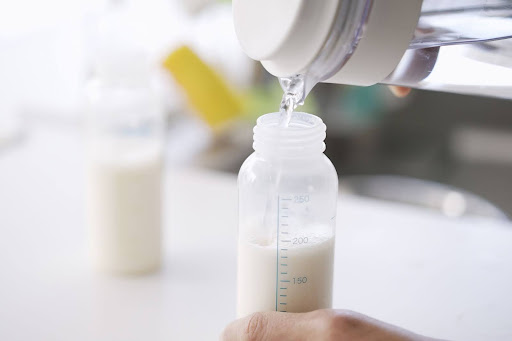
Once breast milk has been reheated, it should be used within 2 hours and never put back in the refrigerator or freezer.
To ensure your baby’s safety, always safely store breast milk and check for signs of spoilage before feeding. Refrigerated breast milk can be kept for up to four days if stored promptly and at the correct temperature.
Here’s a quick breakdown of storage guidelines from the CDC and pediatric experts:
| Storage Method | Freshly Expressed | After Reheating |
| Room Temperature | Up to 4 hours | Use within 2 hours |
| Refrigerator (≤40°F) | Up to four days | Do not re-refrigerate |
| Freezer (0°F or colder) | 6–12 months | Do not refreeze |
6. Reheating Can Reduce Nutritional Value
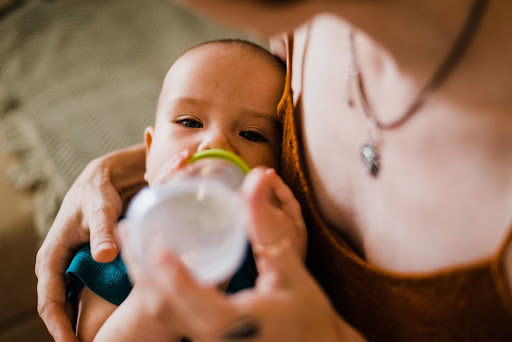
While breast milk is incredibly resilient, heat can break down important components, especially when applied multiple times, as repeated exposure to high temperatures can accelerate nutritional breakdown.
What’s at risk of being lost:
- Lactoferrin, a protein that helps fight infection
- Immunoglobulins, which support your baby’s immune system
- Live cells and enzymes, key to digestion and nutrient absorption
- Reheating milk can further impact nutritional value and may alter the scent/taste due to lipase activity
7. Freeze-Dried Breast Milk Eliminates the Need for Reheating
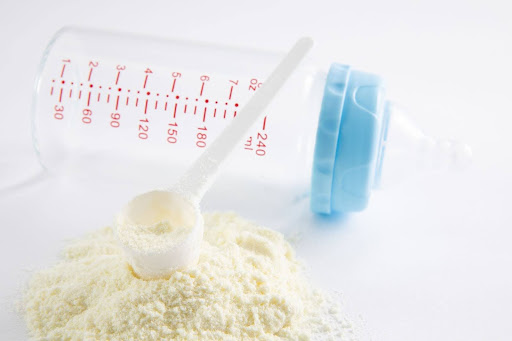
If you’re tired of second-guessing when and how to reheat breast milk—or worried about nutrient loss compared to freshly expressed milk—there’s a better solution: freeze-dried breast milk.
At BoobieJuice, we help moms transform their frozen or expressed milk into a shelf-stable, nutrient-packed powder that:
- Doesn’t require refrigeration or freezing
- Lasts up to 3+ years unopened
- Can be rehydrated instantly with water
- Keeps nutritional value stable
Unlike frozen milk, which requires freezing breast milk promptly and transporting it with frozen ice packs and an insulated cooler to maintain safety and quality, freeze-dried breast milk offers a convenient and reliable alternative.
Why It Matters:
Freeze-drying offers a new way to store breast milk safely and conveniently. Freeze-dried breast milk skips the temperature rollercoaster. You simply add water to the powder and serve—fresh every time, with no fear of over-warming, waste, or bacterial concerns.
How to Keep Breast Milk in the Safe Zone
Whether you’re using traditional stored milk or freeze-dried milk, it’s important to understand the “safe zone” for breast milk storage and use.
- Cold Storage: Refrigerate or freeze promptly after pumping to store breast milk safely.
- Avoid Temperature Fluctuations: Don’t let milk warm and cool repeatedly.
- Reheat Just Once: Then discard unused portions after 2 hours.
- Freeze-Dry for Long-Term Storage: No thawing. No guessing. No waste.
The key is to minimize time in the danger zone and avoid practices that allow bacteria to thrive or nutrients to break down.
FAQs: Reheating Breast Milk Safely
Can I reheat breast milk twice?
No. Reheating breast milk more than once increases the risk of bacterial growth and significantly reduces its nutritional value. Always reheat only once, and discard any unused milk.
What’s the best way to reheat breast milk?
Use a bowl of lukewarm water or a bottle warmer to gently heat milk to body temperature. Avoid microwaves and boiling water.
Can I store leftover breast milk that’s been reheated?
C
No. Once breast milk has been warmed, it must be used within 2 hours. It should not be refrigerated or frozen again.
Is it okay if breast milk separates after being reheated?
Yes. Natural separation is normal. Just swirl the milk gently to mix the fat back in—don’t shake the milk vigorously, as that can break down important proteins and damage nutrients. After reheating, you may also notice a soapy scent; this is usually caused by lipase activity and is harmless, not a sign of spoilage.
How does freeze-dried breast milk compare?
Freeze-dried breast milk retains its nutritional quality without the risks of heating and cooling. It’s portable, shelf-stable, and can be rehydrated on demand—no need to reheat.
Always use gentle warming methods, serve within a safe time window, and avoid the temptation to reheat again. And if you’re looking for the most nutrient-preserving, travel-friendly, and stress-free solution, freeze-dried breast milk from BoobieJuice offers a safer, longer-lasting alternative to traditional storage.
FAQs: Reheating Breast Milk Safely
Can I reheat breast milk twice?
No. Reheating breast milk more than once increases the risk of bacterial growth and significantly reduces its nutritional value. Always reheat only once, and discard any unused milk.
What’s the best way to reheat breast milk?
Use a bowl of lukewarm water or a bottle warmer to gently heat milk to body temperature. Avoid microwaves and boiling water.
Can I store leftover breast milk that’s been reheated?
No. Once breast milk has been warmed, it must be used within 2 hours. It should not be refrigerated or frozen again.
Is it okay if breast milk separates after being reheated?
Yes. Natural separation is normal. Just swirl the milk gently to mix the fat back in—don’t shake the milk vigorously, as that can break down important proteins and damage nutrients. After reheating, you may also notice a soapy scent; this is usually caused by lipase activity and is harmless, not a sign of spoilage.
How does freeze-dried breast milk compare?
Freeze-dried breast milk retains its nutritional quality without the risks of heating and cooling. It’s portable, shelf-stable, and can be rehydrated on demand—no need to reheat.
Always use gentle warming methods, serve within a safe time window, and avoid the temptation to reheat again. And if you’re looking for the most nutrient-preserving, travel-friendly, and stress-free solution, freeze-dried breast milk from BoobieJuice offers a safer, longer-lasting alternative to traditional storage.
Ready to simplify your milk storage?
Explore how BoobieJuice can transform your breast milk into lightweight, mess-free nutrition you can trust—no reheating required. Get your order started!
Ready to simplify your milk storage?
Explore how BoobieJuice can transform your breast milk into lightweight, mess-free nutrition you can trust—no reheating required. Get your order started!
